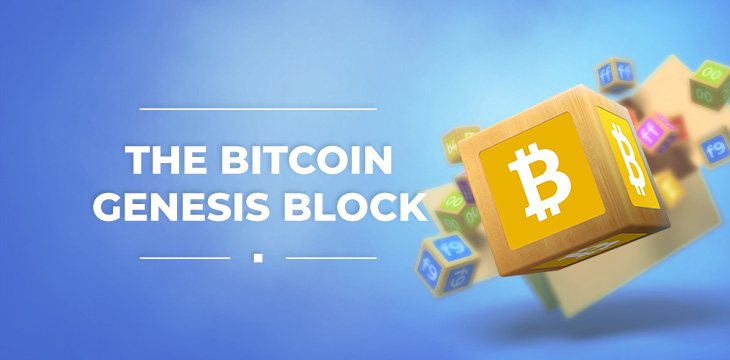|
Getting your Trinity Audio player ready...
|
It’s January 3, and here’s the first Bitcoin anniversary for the year. Eleven years ago today, Satoshi Nakamoto created the first ever Bitcoin block—known now as the Genesis Block. Let’s take a look at some of the reasons it’s important, and especially so this year.
The Genesis Block is “Block 0”, and Block 1 was mined on January 9, after Satoshi Nakamoto released the first Bitcoin software client. Therefore, January 9 is the true “birthday of Bitcoin”—we’ll be returning to this topic in a few days.
From Genesis to Genesis
Eleven might not be a round, even number to celebrate, but this anniversary is still special. Why? Because 2020 is the year Bitcoin is reborn in its truest-to-original form. From February, the word “Genesis” will have two meanings for Bitcoin: the Genesis Block, and the Genesis protocol upgrade.
There’s plenty to read about the Genesis upgrade already, so we’ll look at the Genesis Block here, in honor of its birthday.
The Genesis Block has developed its own mythology over the years. Apart from being Block 0, it does have a few other quirks and unique characteristics. There’s the now-famous headline about bank bailouts, that it’s “unspendable,” and that Block 1 arrived six days later, not the usual 10 minutes. And that’s before we even start thinking about who created Block 0, and why.
Did you say ‘created’?
You’ll notice we didn’t say Satoshi “mined” the Genesis Block. That’s deliberate, and here’s why: Block 0 wasn’t actually mined in the way Bitcoin is today, and has been ever since Block 1, using the proof-of-work mining algorithm.
The Genesis Block, and the coinbase transaction of the first 50 BTC, was actually hardcoded into the original software using a pre-computed key value. Satoshi then used Block 0 as an anchor for the next block, which contains the first Bitcoins. Everything from Block 1 onward is included in the global transaction database, which miners query to initialize their software—more on that below.
The bank bailout headline
“The Times 03/Jan/2009 Chancellor on brink of second bailout for banks.”
That’s the line of text embedded in the Genesis Block’s coinbase code. Many took this to mean Bitcoin must be anti-bank and/or anti-government intervention in the economy, and this Easter egg fueled much of the anarcho-libertarian spirit that still permeates much of the crypto world.
But they’re only half-right. As Dr. Craig Wright explained in the fireside chat at CoinGeek Seoul, the headline serves as a real-world timestamp for the Genesis Block, but it doesn’t mean Bitcoin is out to destroy banking. Rather, it’s a call for accountability and transparency. He did disagree with the notion that banks should be bailed out with public money, saying “I don’t want governments to nationalize business. I want business to work and fail on its own.” It’s more a statement protesting broken capitalism than against the government itself.
https://www.youtube.com/watch?v=QaafKXd9uK0
The Bitcoin of today, if scaled to world proportions, can easily work within the financial system. Indeed, banking services and expertise will always be necessary to handle a structure as complex as the global economy. However, the Genesis Block’s simple message also recognizes the destruction that flaws in the current system can inflict on the economy and human progress from time to time, when things get out of hand.
Genesis Block Bitcoins are unspendable
As mentioned above, the 50 BTC block reward from the Genesis Block are there as a reference point for future blocks. Bitcoin histories often describe this as meaning the first 50 BTC are unspendable—or, that they can’t be moved. Since that first transaction is coded in as a reference point for miners to check before initializing, they’d reject any block that tried somehow to spend them.
To the question “why would Satoshi waste 50 Bitcoins?” Dr. Wright has stated in the past that since BTC had no value at the time, the amount included in that first block wasn’t important.
If you’re ever arguing with someone who says “Satoshi could prove he’s still around by moving coins from the Genesis Block” it means you’re talking to someone who doesn’t understand Bitcoin very well.
Over the past 11 years, people have also sent over 18 BTC to the address 1A1zP1eP5QGefi2DMPTfTL5SLmv7DivfNa, the one that received the Genesis Block reward. They’re probably tributes to Satoshi, or just a way for Bitcoin fans to give themselves a permanent place in Bitcoin history. But those Bitcoins are forever frozen.
Six days between blocks?
Block 1, the first mined Bitcoin block, is timestamped six days after the Genesis Block. From that point on, the Bitcoin network mined a new block roughly every ten minutes no matter what the difficulty.
Theories online as to why the big time difference between the two blocks include Satoshi backdating the Genesis Block timestamp to match the bank bailout headline, or that Satoshi spent six days testing the software against the Genesis block and deleted the test blocks. Some have even looked to the Bible’s Book of Genesis for a religious analogy—the creation of the world in six days.
The real answer is more mundane. Satoshi coded the Genesis Block and original software on a WindowsXP computer, and at that stage it was a side hobby* (since Bitcoin had no value and no guarantee it ever would). The Genesis Block wasn’t mined, so Bitcoin wasn’t yet following the 10 minute rule. Also, January 6, 2009, was a Microsoft “Patch Tuesday” which updated and restarted Dr. Wright’s network of 69 machines, throwing them out of sync. Scrambling to restore the network over the next few days after that upgrade and a few other bugs (with the assistance of Hal Finney and Dave Kleiman) delayed the official software release.
https://youtu.be/MSikhu1X49M?t=2040
The world around us can often seem more like something out of the book of Revelations than Genesis, so there’s nothing like a fresh start. The future must be one of optimism if it’s to work. So on this day, celebrate all that Bitcoin has (and hasn’t) achieved, and think about what we can build over the next decade and beyond.

 01-01-2026
01-01-2026 




